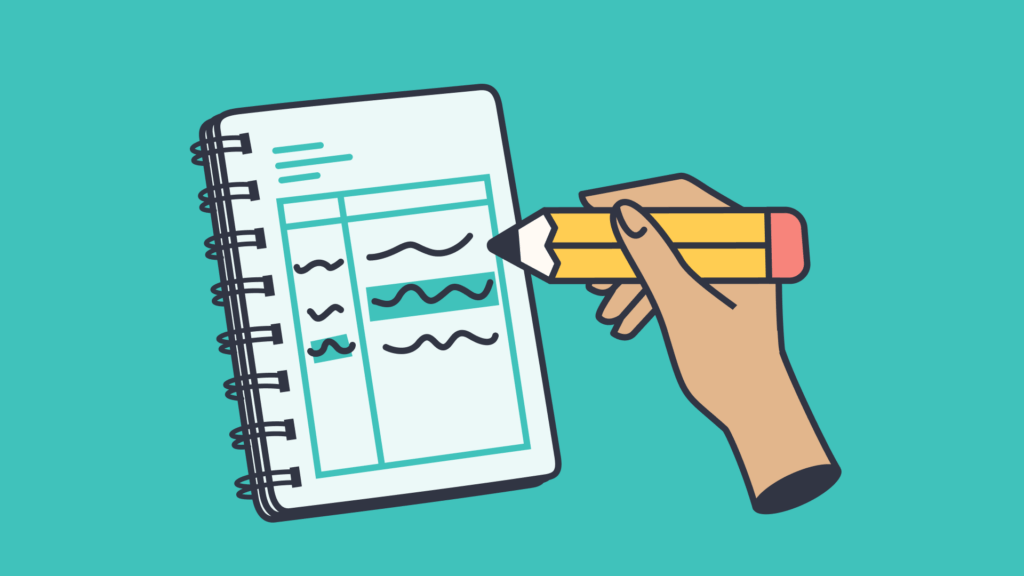How to teach good study habits to your students
In this guide
Benefits of good study habits
As a high school student I did not often do much studying. I was the kind of student that could listen, take notes, quickly review the notes before the test, and ace that test. However, when I got to college and courses became more challenging, I had to learn to study in a much more efficient and effective way.
Good study habits are not always easy to teach to students and sometimes it is because we as teachers were not taught how to study. Some students will resist learning these habits because they are “hard” or because they do not think they need them. Whatever the reason, it is still important to help students develop good habits for lifelong learning.
Increased academic achievement is the most obvious result of good study habits. Some materials can be difficult to grasp or require more attention to master and this can require a different level of focus for each person. For example, whenever I have had an assessment that involves math, it has required more rigorous study on my part.
When you are preparing for a class discussion, assessment, or written assignment, confidence can also help to relieve stress and anxiety. Students may not always feel confident in their abilities.
This may be due to past failures or may simply be because they do not feel they know their materials well enough to be assessed. Good study habits can help to boost students’ confidence by giving them more control over the outcomes.
Finally, good study habits help students to develop better time management skills. Effective study takes time and effort. Creating systems and goals for studying can help students to learn to manage their time so that all of their tasks can be completed. These skills are obviously also vital for successful life skills outside of the school environment.
Mastery of materials is central to academic success. The study habits outlined below, particularly Methods 1 and 2, focus on creating a deeper understanding and comprehension of subject matter.
1) Note-taking

Effective note-taking has a direct impact on our ability to accurately review content. Everyone takes notes differently, but not every type of note-taking is beneficial to all students. It’s important for students to develop a note taking style that works for them and suits their study habits.
In my AVID classroom we used two types of note-taking methods that helped students to include important information and review materials effectively. These two types are two column and three column notes. They are similar systems for note-taking with only slight differences.
Two column notes look like the ones below:

When using two column notes, students write important words, phrases, or main ideas in the left hand column and include their notes in the right hand column. These notes are structured and easy to follow. Students can easily scan and review the necessary information at a later date.
Two column notes can also be referred to as Cornell Notes. The concept is the same for taking Cornell Notes but in the left column, students put important questions to consider during the note-taking process.
Depending on the academic level of the students in the class, the important words or main ideas can already be included on the left side. This can make it easier for students to identify what is important information for them to know and then expand in the second column in the level of detail they need.
Three column notes are very similar, but they include a column for reflection and new knowledge.

This can also allow students to summarize their learning and make connections to previous learning.
Regardless of the method used for note-taking, students should be taught a systematic way to take notes. This skill will serve them well while in school and in any further education they may pursue.
2) Repetition and review
Notes are just words on a page if they are never looked at again. Once note-taking has occurred, it is important for students to then review those notes.
With new students I share a powerful piece of information – two graphs that show the rate of forgotten information and, in comparison, a graph that shows how study or repetition can increase retention of information.
The first graph (below) shows the curve of forgetting. It shows the percent of information retained over time. In one hour, 44.2% of new material is retained, however, in 31 days only 21.1% of information is retained.
In short, this graph shows that information is forgotten at a fairly rapid rate. Assessment does not always occur within 20 minutes of learning new material and thus must be learned in different ways to move the information from short to long term memory.
Conversely, in several subjects, information for that topic builds on itself, for example in a math class, it can be hard for new concepts to be learned if the original material is missing from student knowledge.

The second graph (below) shows the rate of forgetting with study or repetition. If materials are reviewed, then retention of information is much higher. In short- repeated exposure to information is vital to student academic achievement.
These graphs provide concrete evidence to students that studying is important. They provide the teacher with a way to reinforce the habits they are teaching.

A way to help students to have repeated exposure to materials is to give them a system for reviewing and the time to review notes. This does not need to take up a large portion of the class but can be done within 3-5 minutes at the start or end of a lesson. Model the behavior and make it a regular part of your classroom routine.
The following is an example of how this could occur in a classroom. This can work with any type of notes – guided notes, one column, two column, sketch notes, etc.
Day 1:
- Notes are taken during class.
Day 2:
- Students review their notes – highlighting any words or phrases they are unsure about. Students are then given the opportunity to address what they need further help with. This opportunity can be with the teacher or fellow students.
Day 3:
- Students review their notes and place a symbol (smiley face, check mark, etc) next to materials they know and understand.
Day 4:
- Students review their notes and add any missing information or new information they have learned about the subject matter. New information can come from the teacher, the text, research, other students, class discussions, or even other subjects. The new information can take the form of pictures, words, or phrases.
Day 5:
- Students review their notes and create assessment type questions over their notes. These can be multiple choice, short answer, open ended, or whatever types of questions would be appropriate to the content.
Day 6:
- Students write a summary of their notes and the knowledge they have gained about the material. Summarizing notes allows students to synthesize the information they have learned into a succinct explanation of their learning.
One tip to make this process more beneficial is for students to use different colors for each review of their notes. This allows them to see their progression of knowledge and to differentiate new learning from previous learning.
3) Using a calendar
Cramming for a test creates undue stress and anxiety. Our brains are not made for this type of forced information overload and even if you can manage it, this information will only ever be in short term memory, it will soon be lost. Teaching students to create study goals and schedules can keep cramming from becoming an unwanted habit.
Time management skills are difficult to learn and even more difficult to unlearn when they are unhealthy habits. Therefore, the key to skills like keeping a calendar or goal setting is to be consistent.
Keeping a planner or calendar is an easy way to create a visual reminder. It is also an excellent place to set study goals.
On a previous campus where I taught, every student was given a planner. This planner included a calendar, a space for daily assignments, and a section for writing in homework. It also conveniently had a place to set goals.
However, this is not always an option or something that is provided by a school. A teacher can help students to develop the habit of calendaring and goal setting with the use of paper calendars or electronic calendars.
Below is an example of a calendar:

This calendar includes color coding, dates when assignments are due, class information, and personal activities. Including personal or extracurricular activities is important because students need to take those into account when planning. Students can include their goals on their calendar.
Some students will respond best to a daily calendar whereas others may work best with a week by week diary, an electronic diary or a monthly calendar. Expose students to a range of different strategies and allow them to delineate which method they find most beneficial.
4) Study timeframes

Another time management skill that can help build students’ study habits is studying for shorter, more regular, time periods. This also eliminates the issue of cramming before a test.
Depending on the age of students, studying should happen in 20 to 40 minute increments. Middle school students will typically be closer to 20 minutes and older high school students closer to 40.
This will obviously depend on how student’s brains work. Extra time may be required to upskill students on how their brains can work, and identify how their brain works best.
A great way to model this habit is to provide short amounts of structured study time in the classroom. This can be done when students review their notes for 3 to 5 minutes each day, when completing a review for a test, or in a group activity such as flashcards or a game.
Giving students opportunities to take brain breaks is also important. Teaching them how to stop and shift their focus to an activity that requires less brain power can help them to be able to study longer.
An important tip to teach students that are studying using an electronic device is to look up and away from the screen every 15 to 20 minutes. The blue light from electronic devices can be damaging to eyes and can also cause headaches and fatigue.
5) Location, location

A major topic that is often discussed around study habits is the location where the studying occurs. Limiting distractions and having the right materials are helpful to creating a positive study environment.
Study space needs:
- Quiet and free from distractions
- Comfortable
- Good lighting
- Surface for writing/typing
- Study materials readily available
- Writing utensils and paper available
For many students a space like this is simply not possible. For many years I have taught students that came from families that did not have a lot of money. Often my students shared their spaces with multiple family members. I also had many students with parents that did not speak English or did not have the means to help their children with their schoolwork.
Students do not always have parents that are able to provide them with their own space or take them to the local library. Some students do not have access to the internet at home and sometimes, not even reliable electricity.
This is something to take into consideration when teaching students that location matters for studying. If students have the ability to create a designated study space, by all means, teach them how to. For those who do not; teach them ways in which they can learn within their boundaries and capabilities.
- Give them opportunities in your classroom and during the school day.
- Provide a safe and quiet space for them to come to study for your class and for others.
- If possible, ensure that they have access to local libraries.
- If your school has a library, partner with the librarian to give students an additional space where they can create an environment conducive to studying.
- This might also be as simple as ensuring that these students have access to regular nutritious food – remember that fueling your brain might be the missing link for many students.
Developing regular study habits when students are younger can significantly increase their learning outcomes when they are older. Modeling for students how to study and providing opportunities for them to learn and grow should be a goal for any teacher.
References
- AVID (2024). The Curve of Forgetting. Available at www.AVID.org (Accessed: 24 August 2024).
- Florida National University (no date). 11 Techniques to Improve Your Study Habits. Available at https://www.fnu.edu/7-techniques-improve-study-habits/ (Accessed: 24 August 2024).
- Washington State University (2019). Healthy Study Habits. Available at https://cougarhealth.wsu.edu/counseling/healthy-study-habits/ (Accessed: 24 August 2024).

Mattie Farrer
briefcase iconAVID Site Coordinator / Content Curator
Mattie Farrer has been an educator in various grade levels and capacities during her career. She has a passion for supporting English learners and their language development. She also loves helping teachers reach all students.
Other posts
Want more content like this?
Subscribe for blog updates, monthly video releases, trending topics, and exclusive content delivered straight to your inbox.














